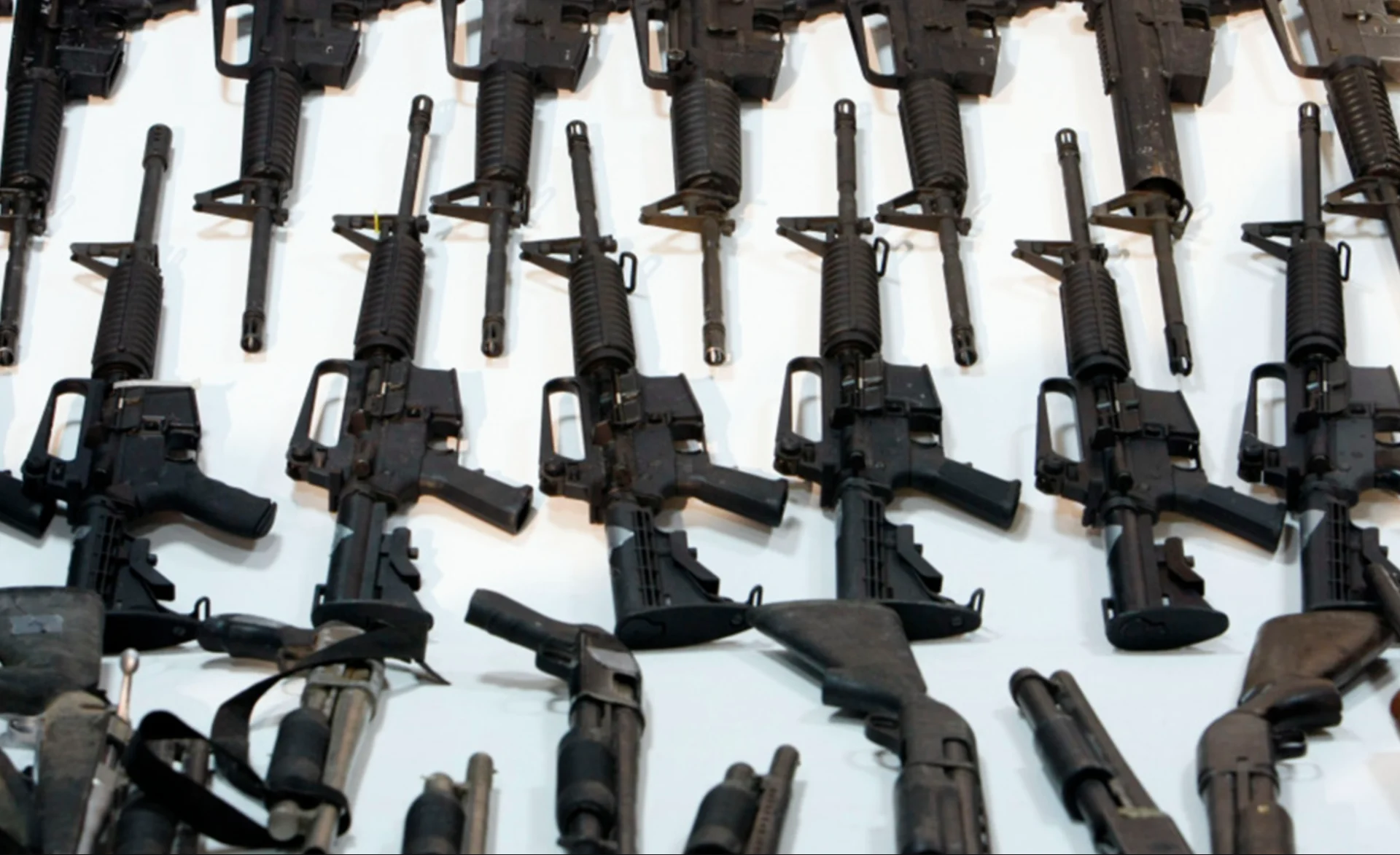The control of firearms and armed crime in Mexico are crucial issues, particularly given the disparities among its 32 federal entities. Using official quantitative data, it becomes evident that control measures such as gun exchange and registration are not necessarily linked to crime rates, whereas the seizure of weapons shows a significant correlation with criminal activities. This text offers a detailed view of the current complex situation, based on sources from the Secretariat of National Defense, the Prosecutor’s Offices of the federal entities, and the Office of the Attorney General of the Republic.
Firearms control
Armed violence is a global phenomenon that causes the deaths of more than 600 people daily, according to Amnesty International. In Mexico, most homicides are committed with illegal firearms from the United States, which is a crucial factor in the country’s crime rates. Despite various public policies and legislative proposals to control firearms, armed violence remains a significant concern whose origins and magnitude are not yet fully understood.
Firearms control in Mexico exhibits notable variability among its different federal entities. Examining four key aspects of firearm control—registration, carrying licenses, exchange programs, and seizures—reveals significant disparities in the implementation and effectiveness of these measures at the national level, highlighting regional differences and the complexity of the current armed violence landscape in the country.
Firearms registration. Mexico City stands out as the entity with the highest proportion of registered firearms. However, densely populated states like the State of Mexico and Puebla show considerably low registration figures, while less populated states such as Colima and Campeche have a surprisingly high proportion of registrations. This reflects an unequal distribution of firearm registration nationwide.
Carrying licenses. Licenses for carrying firearms also show significant disparity in their distribution. Mexico City again leads with the highest granting rate, followed by Nuevo León, Querétaro, and Campeche. In many other states, the number of licenses granted is extremely low, with some figures close to zero.
Gun exchange programs. The firearm exchange program is most active in Mexico City, along with Sinaloa, Coahuila, Durango, Chiapas, Baja California, and Sonora. On the other hand, Quintana Roo, Yucatán, Veracruz, Puebla, and Tabasco have the lowest exchange rates. These differences reflect significant regional disparities, especially between northern and southeastern Mexico.
Weapon seizures. In terms of seizures, Tamaulipas leads with the highest cumulative number, followed by Sinaloa, Michoacán, and Guerrero. These entities are in the Pacific region, where the seizure of long guns is predominant. In contrast, Yucatán has the lowest number of seizures, followed by Chiapas, the State of Mexico, and Campeche, where handguns are more prevalent.
Crimes involving firearms
The crime rates related to the use of firearms in Mexico show significant variations among the federal entities. This analysis covers three types of crimes: gunshot injuries, homicides, and violations of the Federal Firearms and Explosives Law. The data reveal distinctive regional patterns, with some entities registering high rates of armed violence, while others present comparatively low levels. These differences underscore the complexity of armed violence in the country and the need for specific regional approaches to address this multifaceted problem.
Gunshot injuries. Guanajuato, Michoacán, and the State of Mexico register the highest rates of gunshot injuries, while Tlaxcala, Yucatán, Baja California Sur, Tamaulipas, and Coahuila have the lowest rates. This distribution suggests regional differences in the incidence of armed violence.
Homicides. Colima reports the highest homicide rate, significantly surpassing other entities. Yucatán, Coahuila, Baja California Sur, and Aguascalientes are at the other end with the lowest homicide rates. These variations reflect the complexity of armed violence in different regions of the country.
Violations of the federal firearms and explosives law. Colima, Sonora, and Baja California have the highest proportion of violations of the Federal Firearms and Explosives Law, while Yucatán, Durango, and Tabasco have the lowest proportions. These data indicate a disparity in the commission of firearms-related crimes across different parts of the country.
Correlation between firearm control and crime
The data analysis reveals that gun exchange and registration do not have a statistically significant correlation with the commission of crimes. This suggests that these control actions do not quantitatively impact the reduction of armed crime. However, there is a positive correlation between weapon seizures and crime rates (as the number of seized weapons increases, so does the number of crimes committed with them), which, despite seeming inconsistent, rather indicates a reactive rather than preventive strategy in firearm control.
The needs for firearm control and crime reduction vary significantly among Mexico’s 32 federal entities. The diversity of regional realities necessitates the adaptation of specific public policies and cooperation among entities. It is crucial to address these challenges effectively and equitably, considering the differences in the magnitude of the problem in each federal entity and region of the country.
Furthermore, the importance of developing firearm control strategies that are both preventive and reactive and adapted to the particularities of each jurisdiction is emphasized. Collaboration between different levels of government and the implementation of evidence-based policies are essential to effectively combat armed violence in Mexico.
*This text is based on the article “Violencia armada en México: análisis cuantitativo sobre control de armas de fuego y su correlación con la incidencia delictiva” published in Quórum Legislativo 143, pp. 153-196, https://bit.ly/4d7mAQa with data mostly corresponding to the year 2022.
Translated by Ricardo Aceves from the original version in Spanish.













